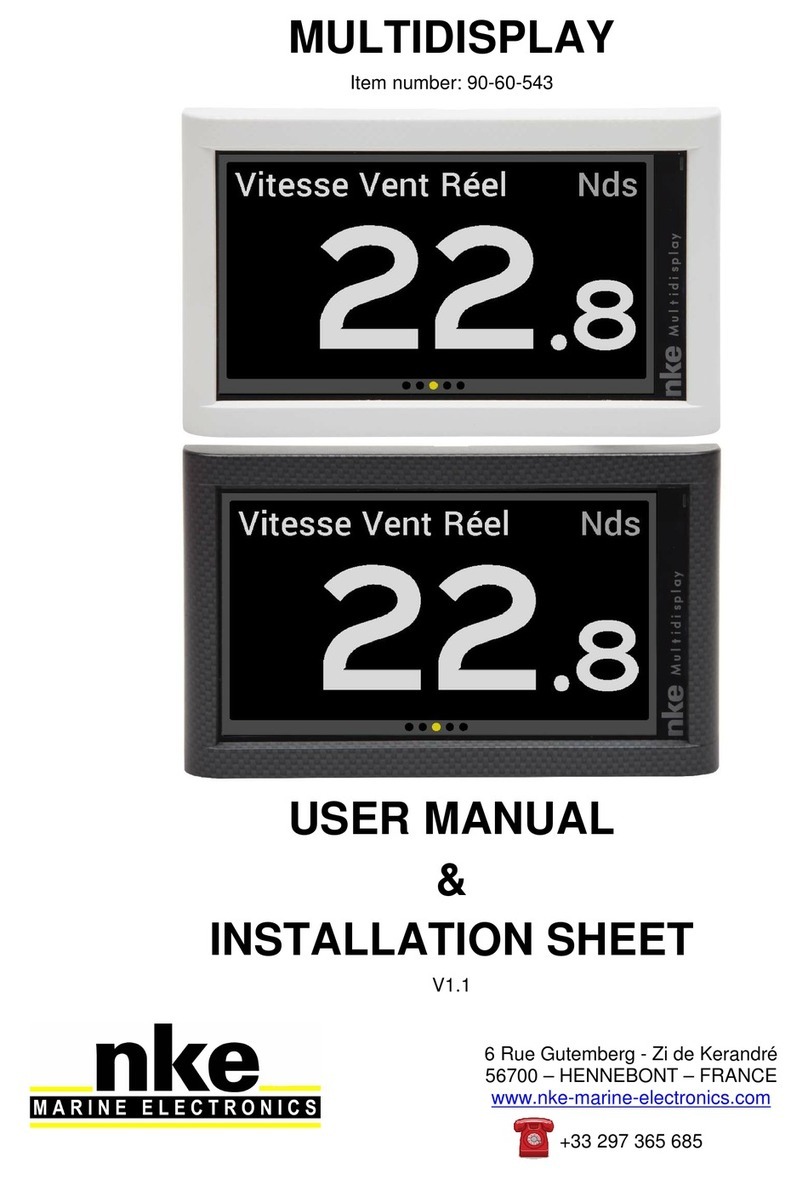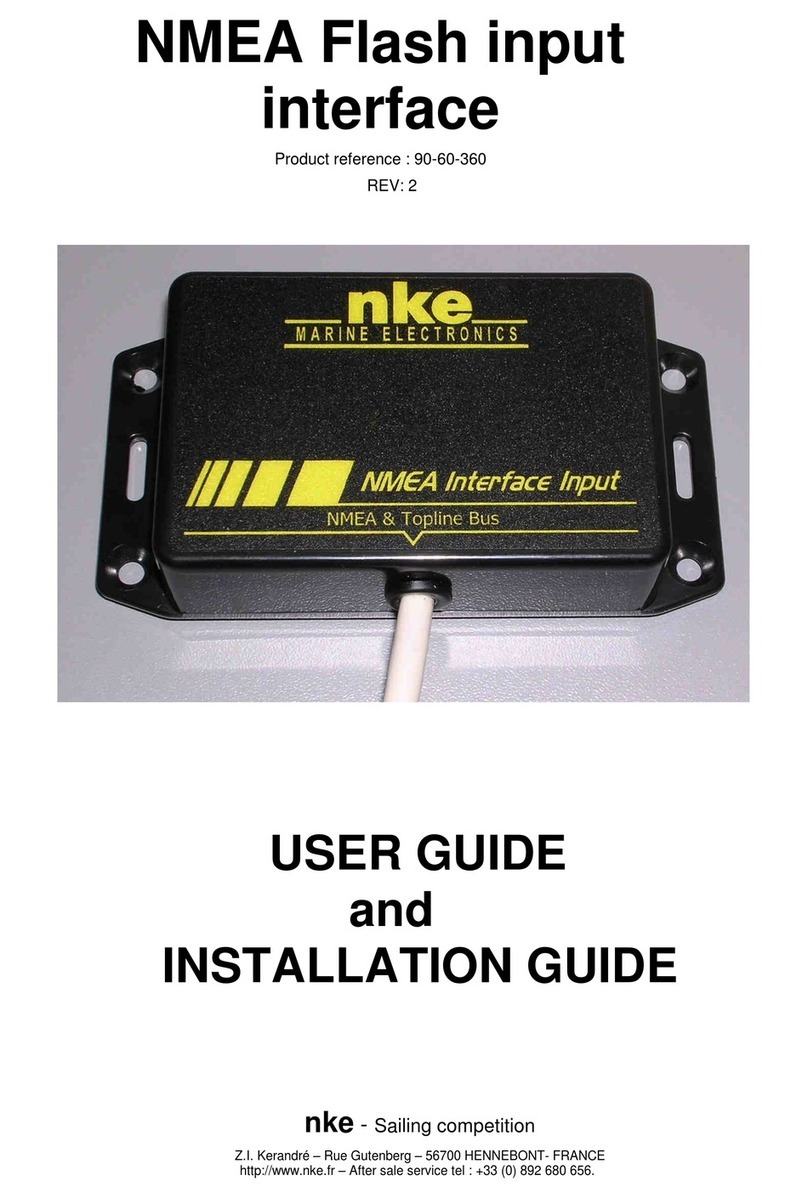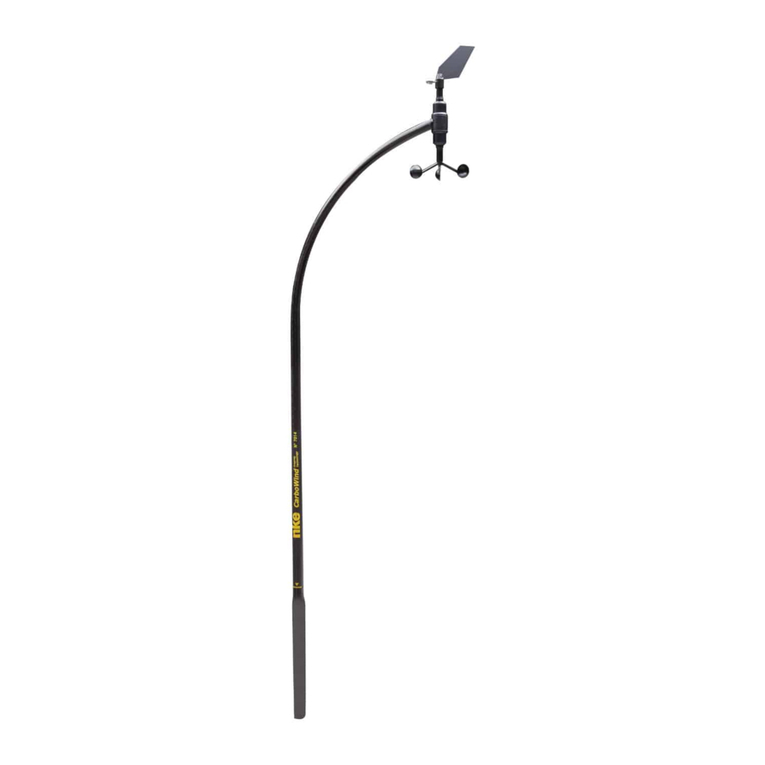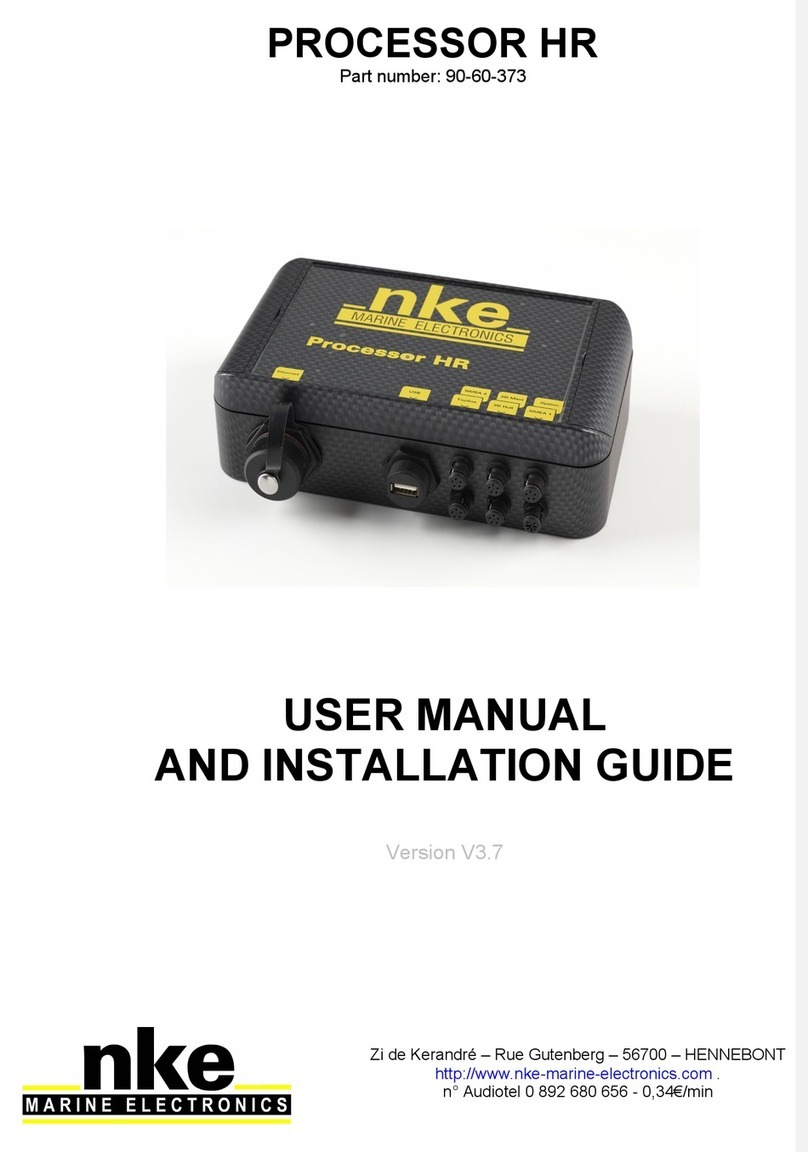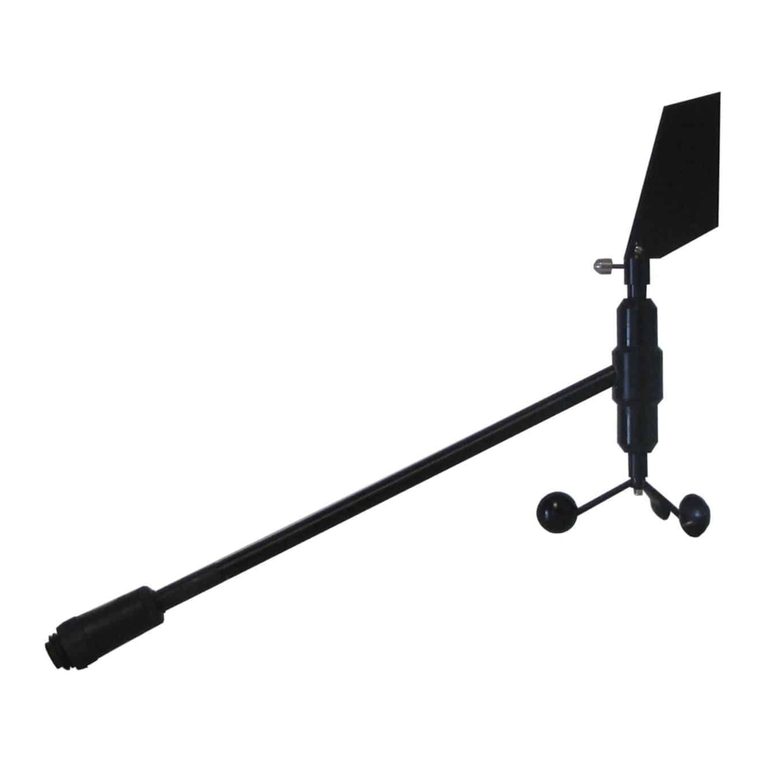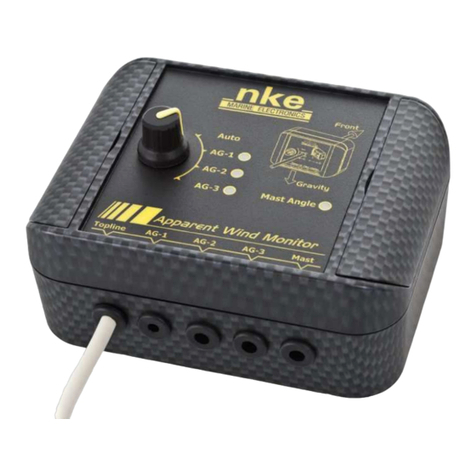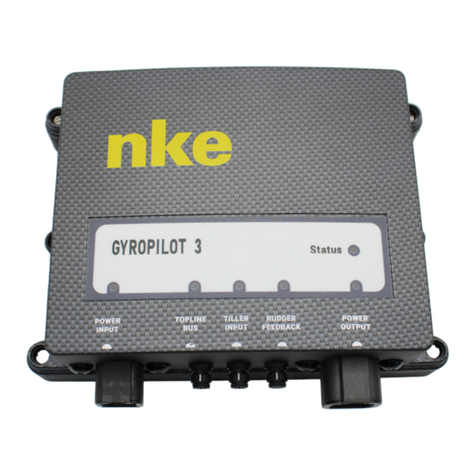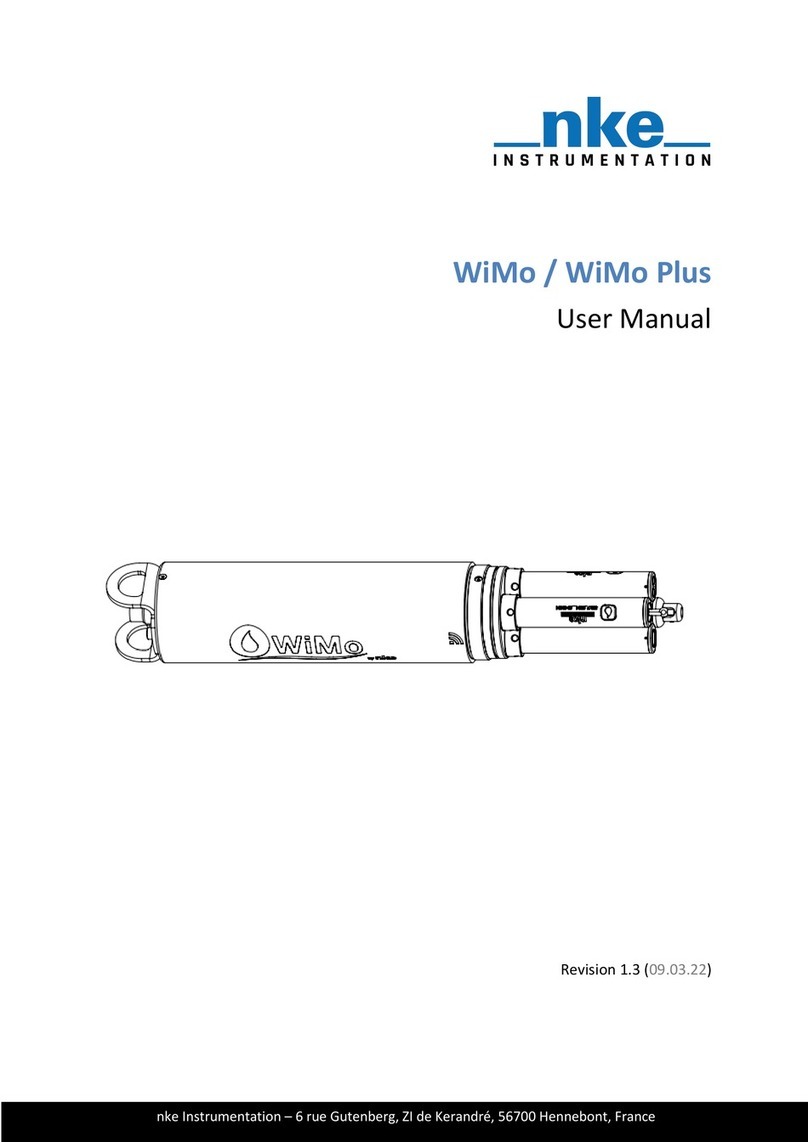- 3 -
33-60-049-000
AIS Receiver–processor / User manual
1 OPERATION
1.1.INTRODUCTION
Thank you for purchasing the nke A.I.S. receiver-processor.
A.I.S. (Automatic Identification System) is a worldwide system for exchanging information
between ships and stations ashore. A.I.S uses dedicated VHF frequencies to automatically
broadcast information such as ship’s identification, status, position and route. This information is
available to any ship or traffic control station within the signal reception area.
This data, combined with information coming from the GPS, allows the nke AIS Receiver-
Processor to calculate collision risks and to send an alarm to the nke Gyrographic (version
3.20 and up) out in the cockpit.
DISCLAIMER
Data provided by the nke A.I.S. receiver-processor provides an indication only. The
users acknowledge that they are aware that data received can be partial and / or incorrect and
that they are solely responsible for any risks related to the use of this instrument. In no event
shall nke be liable for any direct, indirect, incidental, or consequential damage related to the use
of this instrument.
IMPORTANT
Please take time to read this manual carefully before you start installation
Any connection to the TOPLINE bus must be performed through the specific interface box
#
90-60-417 and only with the TOPLINE bus cable
#
20-61-001
System configuration
BLANC
GND
NOIR
BLANC
GND
NOIR
12V
GND
NMEA-
NMEA+
NMEA-
NMEA+
init
connetion box
90-60-417
Figure 3 : Connection AIS Receiver to the Gyrographic
BLANC
GND
NOIR
Green
Yellow
GPS
11
Aut
o
Sto
p
Pag
eEnt
AIS - Collision Danger
Ship MMSI 923456789
Bearing: 69° Dist: 9.0Mn
Colision data:
Time: 35min Dist: 2.0Mn
Ship MMSI 785234468
Bearing:23° Dist: 6.4Mn
Collision data:
Time: 19min Dist: 1.2Mn
